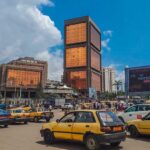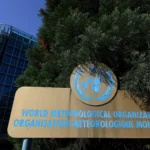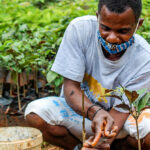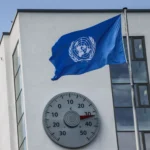Yaoundé’s skyline of green hills and bustling streets tells a story of growth and energy. But beneath its vibrant surface, Cameroon’s capital is heating up pretty fast.
A new study warns that Yaoundé could face temperatures as high as 38°C by 2030, as rapid urbanisation and loss of vegetation turn the city into a network of urban heat islands. The population has surged from 59,000 in 1957 to over 4 million today, but trees and open spaces have vanished in the process. Concrete, asphalt and metal now dominate the cityscape, trapping heat and raising health risks.
“Over the past decade, the forest area around Yaoundé has halved,” says geographer Philippes Mbevo Fendoung, who led the research. “Without green cover, the city can no longer breathe.”
Life inside a heat trap
Satellite data show that hard surfaces in Yaoundé have increased sixfold since 2015. Dense districts, where homes are tightly packed and ventilation is poor, are now the hottest zones.
Residents feel the impact daily — headaches, heat exhaustion, and worsening asthma are common.
In a survey of 300 households, only 2.9% had air conditioning, and nearly half earned under $180 a month, far too little to afford cooling systems.
“The heat affects everything,” one street vendor said. “We work fewer hours because the sun is unbearable. Sales drop, and life just feels harder.”
Farmers around Yaoundé also report failing crops and falling incomes as the heat dries out the soil and stresses plants. Even accessing clean water has become a challenge, with frequent cuts compounding the strain.
A city struggling to adapt
Experts say Yaoundé’s urban design has not kept pace with its population. Informal settlements now house 60% of residents, often with little greenery, poor ventilation, and no sanitation. “The poorer you are, the hotter it gets,” Fendoung explains.
To cool the city, researchers recommend expanding parks and tree-lined streets, redesigning buildings with reflective materials, creating shaded public areas and fountains, and introducing affordable, climate-smart housing.
Public awareness campaigns and heat-health monitoring could also help reduce risks, especially for children and the elderly.
Planning for a hotter future
With climate change intensifying, Yaoundé’s struggle is a glimpse of what many African cities face.
Urban heat is becoming a silent emergency, one that threatens livelihoods, public health and equality. To survive, Yaoundé must act now: rethink its architecture, restore its greenery, and design a city that works with the climate, not against it.










